Higher Performance Insights | Mental Models: The Master Key to Better Decision Making
Over the last seven years, I’ve written a lot about my favorite big ideas in this blog newsletter.
From Game, Set, and Insight of Being Less Wrong to Command Your Inner Toddler: Master the Five Whys, tools like these have helped leaders make better, more informed decisions in everyday life.
However, while helpful, these ideas fall under a bigger idea: mental models.
A mental model is a decision-making tool that guides our perception of the world and our behavior in it. They help us understand life, make decisions, and solve problems.
Ignoring them, as quoted by Gabriel Weinberg and Lauren McCann, “is like using addition when multiplication is available to you.”
I recently read Weinberg and McCann’s new book, Super Thinking, and I thought sharing my summary would spur your thinking and encourage your review of this book, which is properly perched on my nightstand.
Super Thinking: The Big Book of Mental Models, by Gabriel Weinberg and Lauren McCann
The Book in One Sentence: Super Thinking is about the frameworks and shortcuts top performers rely on to cut through complexity and separate good ideas from bad ones.
Favorite Quote: “When you don’t use mental models, strategic thinking is like using addition when multiplication is available to you.”
Summary
The book explores essential mental models and frameworks top performers use to make better decisions and solve complex problems. It's organized around nine key themes that help readers think more clearly and avoid common mental traps.
The foundation begins with "being wrong less" by using first principles of thinking, questioning assumptions, and avoiding biases like confirmation bias and framing effects.
The book emphasizes using tools like Ockham's razor (choosing simpler explanations) and seeking multiple perspectives through "thinking gray" and playing devil's advocate.
Time management is addressed through concepts like the Pareto principle (80/20 rule), which focuses on avoiding multitasking and recognizing diminishing returns.
The book also covers understanding natural systems and change, advising readers to adopt an experimental mindset and respect inertia when implementing changes.
Statistical thinking is emphasized, warning against common fallacies and highlighting the importance of understanding causation versus correlation.
The book recommends using cost-benefit analyses and considering black swan events through systems thinking for decision-making.
The latter sections focus on practical applications: handling conflicts through game theory, developing leadership skills by unlocking people's potential, and building market power through competitive advantages.
It emphasizes the importance of finding your unique "secret" and maintaining a sustainable competitive edge while staying vigilant against disruption.
The book stresses the importance of challenging conventional wisdom, seeking objective truth, and using structured thinking approaches to navigate complexity and make better decisions.
Recommended Reading
If you like Super Thinking, you might also like:
- Decisive: How to Make Better Decisions by Chip & Dan Heath
- Indistractable: How to Control Your Attention and Choose Your Life by Nir Eyal
- Digital Minimalism: Choosing a Focused Life in a Noisy World by Cal Newport
Team Discussion Question
What's one mental model you've successfully applied as a leader, and how did it help you make a better decision? Share a specific example where this framework changed your approach or outcome.
Announcement
Help Spread the Word
If you found value in this post, we’d love your help spreading the word! Please consider sharing this on your favorite social media platform and tag Higher Performance Group and Dr. Joe Hill. Your support helps us reach and inspire more awesome people like you!
Like What You've Read?
Get practical, research-based ideas to Accelerate
Higher Team Performance delivered straight to your inbox every Tuesday.
More Blog Articles


PO Box 80
Stillwater, MN 55082
info@higherperformancegroup.com
LinkedIn : Dr. Joe Hill
Instagram: @higherperformancegroup
YouTube : Higher Performance Group
All Rights Reserved | Higher Performance Group | Privacy Policy


